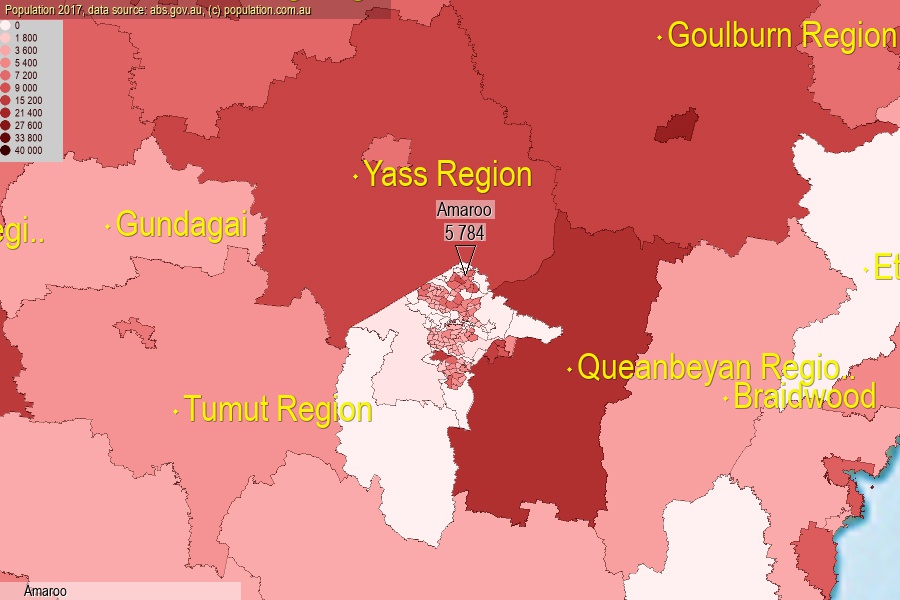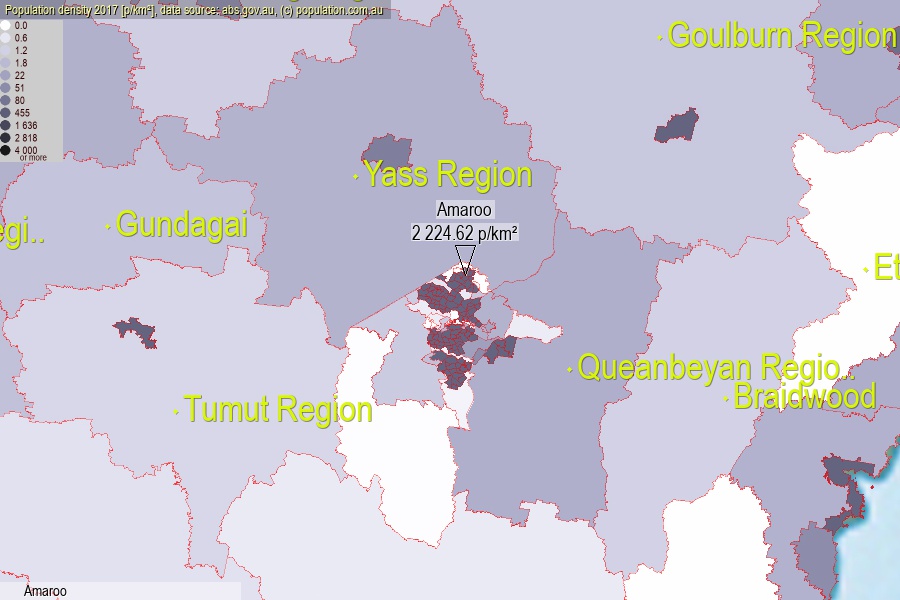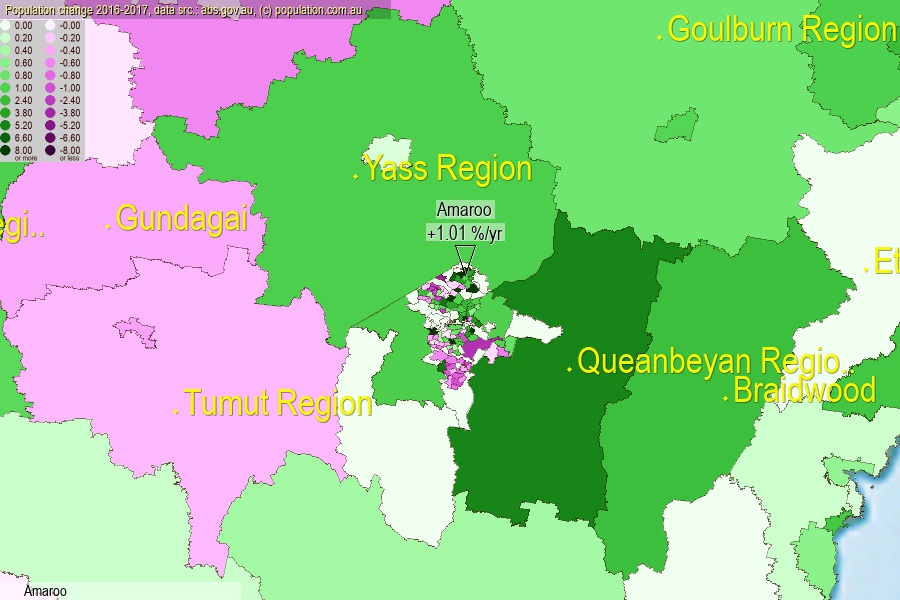 population.com.au
population.com.auLast official estimated population of Amaroo (as Statistical Area Level 2) was 5 784 people (on 2017-06-30)[2]. This was 0.02% of total Australian population and 1.38% of ACT population. Area of Amaroo is 2.60 km², in this year population density was 2 224.62 p/km² . If population growth rate would be same as in period 2016-2017 (+1.01%/yr), Amaroo population in 2025 would be 6 270. [0]



Click to enlarge. Amaroo is located in the center of the images.
Population [people], population density [p./km²] and population change [%/year] [2]
View borders » (new window) [4]
[1991-1992] 0.00 %/Yr.
[1992-1993] +185.00 %/Yr.
[1993-1994] +101.75 %/Yr.
[1994-1995] +188.70 %/Yr.
[1995-1996] +85.84 %/Yr.
[1996-1997] +63.53 %/Yr.
[1997-1998] +41.23 %/Yr.
[1998-1999] +32.84 %/Yr.
[1999-2000] +25.20 %/Yr.
[2000-2001] +41.81 %/Yr.
[2001-2002] +21.33 %/Yr.
[2002-2003] +18.20 %/Yr.
[2003-2004] +12.51 %/Yr.
[2004-2005] +3.08 %/Yr.
[2005-2006] +1.38 %/Yr.
[2006-2007] +2.10 %/Yr.
[2007-2008] +1.31 %/Yr.
[2008-2009] +0.12 %/Yr.
[2009-2010] -1.58 %/Yr.
[2010-2011] -1.89 %/Yr.
[2011-2012] +0.09 %/Yr.
[2012-2013] -0.02 %/Yr.
[2013-2014] +0.05 %/Yr.
[2014-2015] +0.23 %/Yr.
[2015-2016] +0.69 %/Yr.
[2016-2017] +1.01 %/Yr.
[0] Calculated with linear interpolation from officially estimated population
[1] Read more about SA2 and Australian Statistical Geography Standard (ASGS) on abs.gov.au
[2] Population data from Australian Bureau of Statistics (Population and density: 2017; change: 2016-2017)
[3] Digital Boundaries: Australian Statistical Geography Standard (ASGS) 2016.
[4] Border coordinates are simplifyed using Ramer-Douglas-Peucker algorithm.